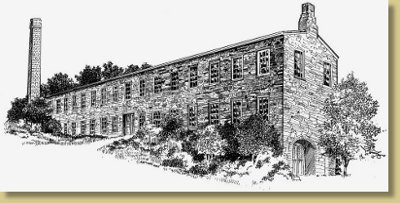Dorflinger Glass Company's Cutting Shop

From 1993 through 2008 the Honesdale National Bank published an annual wall calendar, each featured 13 historic sites. The sites were chosen and researched by a committee of the historical society and artwork was commissioned to Judy Hunt and William Amptman by the bank.
This page was one month of the calendar and was made possible through the Wayne County Commissioners and a Tourism Promotion Committee’s Tourism Grant.
Navigation



